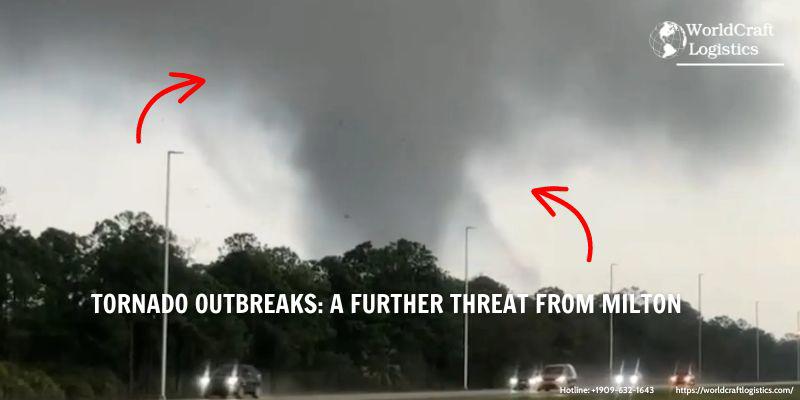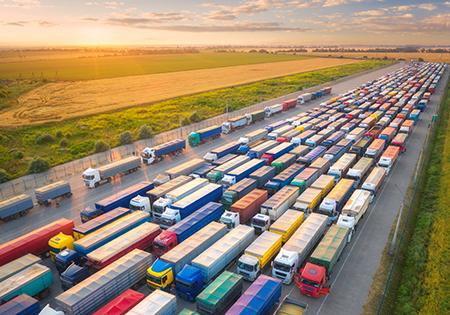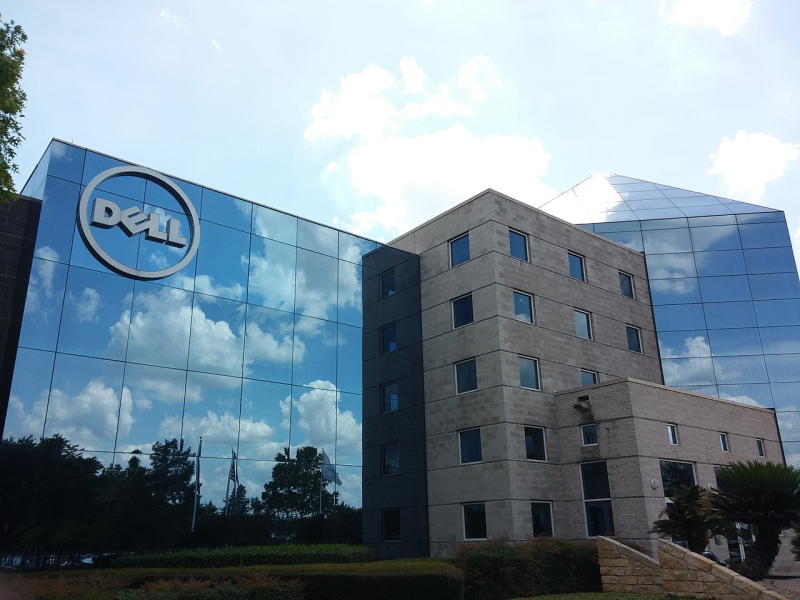
Starting June 1st, 2023 Our warehouse fee will be $0.65/cubic foot per month
In effort to lower the warehouse storage fee during inflation, we have went narrow aisle racking.This construction took us four months but the project is finally completed. With narrow aisle racking, we are able to drop storage by 24%.We as partners will go through this inflation together.
10/09/2024
Hurricane Milton made landfall in Florida as a powerful Category 3 storm on Wednesday, unleashing destructive winds and spawning a series of tornadoes that devastated many regions across the state. With wind speeds exceeding 120 mph (205 kph) and a relentless storm surge, the storm hit Siesta Key first, a popular tourist destination known for its pristine white beaches. As the storm progressed, it impacted major cities along the Gulf Coast, including Tampa, St. Petersburg, Sarasota, and Fort Myers.
Milton made its way to Florida’s Gulf Coast with maximum sustained winds of over 120 mph (195 kph), wreaking havoc on the Siesta Key area. This region, located 70 miles (112 km) south of Tampa, witnessed the full force of Milton’s impact. While Tampa narrowly avoided a direct hit, other Gulf Coast cities weren’t as fortunate. The storm surge and high winds battered coastal communities, flooding streets, damaging homes, and causing widespread destruction to local infrastructure.
The storm’s effects were magnified as it hit an area still recovering from the damage caused by Hurricane Helene just two weeks earlier. Helene’s storm surge caused significant beach erosion, destroyed homes, and killed at least 230 people across the southern U.S. Milton, with its deadly combination of high winds and heavy rain, threatened to worsen the already fragile conditions, leaving residents scrambling for safety.
More than 1 million homes and businesses were left without power in the aftermath of Hurricane Milton. Sarasota County and neighboring Manatee County were particularly hard hit, experiencing the highest number of power outages. The powerful winds snapped power lines, knocked down trees, and damaged utility poles, further complicating recovery efforts. In some cases, officials warned residents that power could remain out for several days or even weeks.
As the storm made its way across the Florida peninsula, it also triggered dangerous inland flooding. Milton’s torrential rainfall led to rapid water accumulation in rivers and lakes, with up to 18 inches (46 centimeters) of rain expected in some areas. This presented significant risks for communities far from the storm’s coastal landfall.

In addition to the destructive winds and storm surge, Hurricane Milton produced several tornadoes that touched down across the state. These tornadoes, known for their unpredictability and rapid formation, posed an additional threat to communities already bracing for the hurricane’s impact. One tornado touched down in the Everglades, while another hit Fort Myers, leaving behind a trail of destruction, snapping tree limbs, and ripping apart structures.
Residents took to social media to share videos of funnel clouds swirling dangerously close to neighborhoods. The tornadoes acted as harbingers of the approaching storm, adding to the growing sense of fear and urgency among Florida’s residents.
Ahead of Hurricane Milton’s arrival, state and local officials issued mandatory evacuation orders for 15 counties, affecting approximately 7.2 million people. Emergency management personnel warned that anyone who chose to stay behind would have to fend for themselves, as first responders could not be expected to risk their lives during the peak of the storm. As the hurricane bore down on the coast, many counties suspended emergency services, leaving those who had not evacuated to ride out the storm on their own.
In Pinellas County, Emergency Management Director Cathie Perkins issued a dire warning, comparing Hurricane Milton to a “knockout” punch following the heavy blow of Hurricane Helene. By late afternoon, the opportunity for evacuation had passed, leaving residents to hunker down and prepare for the worst.
Evacuating during a major hurricane is never easy, and for many Florida residents, leaving wasn’t an option. Jackie Curnick, a Sarasota resident, faced a difficult decision about whether to evacuate with her family. With a 2-year-old son and a baby due in late October, she and her husband decided to stay at home after being unable to secure affordable hotel accommodations. Their decision, like that of many others, was compounded by logistical challenges: full hotels, limited gas supplies, and clogged roads made evacuation an increasingly difficult and dangerous prospect.
Curnick highlighted the particular difficulty of evacuating from Florida, a state where the options for escape are limited by its geography. With a peninsula that offers few north-south routes, many residents found themselves trapped, forced to decide whether to face the storm at home or risk getting caught on the road in deteriorating weather conditions.
Florida Governor Ron DeSantis outlined a comprehensive response plan that included the deployment of 9,000 National Guard members from across the country, utility workers from as far away as California, and highway patrol escorts for gasoline tankers to ensure fuel supplies remained available for those evacuating. These efforts underscored the state’s commitment to saving lives and providing assistance to those in harm’s way, but even the most robust preparations could not prevent the storm’s deadly impact.
As of Wednesday evening, Hurricane Milton had weakened slightly but continued to move northeast at a steady pace. However, the devastation left in its wake was clear. Airlines had canceled nearly 1,900 flights, and major tourist attractions like Walt Disney World and Universal Orlando had closed in preparation for the storm. Gas shortages plagued the Tampa and St. Petersburg areas, with over 60% of gas stations running out of fuel.
Many residents, like auto technician Josh Parks, faced the grim reality of returning home to damaged or destroyed property. Parks, who fled his flood-stricken neighborhood in Charlotte Harbor, packed up his belongings and prepared for a long stay inland, leaving behind a home already damaged by Helene’s storm surge.
Hurricane Milton is just the latest example of the growing frequency and intensity of storms impacting Florida and other coastal regions. As climate change accelerates, scientists predict that hurricanes like Milton will become more frequent and more destructive, putting millions of lives and homes at risk. For Floridians, the challenge of rebuilding after each storm grows more difficult, raising important questions about the state’s preparedness and long-term resilience in the face of future storms.
In the days and weeks to come, Florida will once again begin the arduous process of recovery, but the scars left by Hurricane Milton will serve as a lasting reminder of the destructive power of nature - and the urgent need to take action against the growing threat of climate-related disasters.
Hurricane Milton, which made landfall along the U.S. Gulf Coast, has had significant repercussions on logistics and supply chain operations throughout the country. Below are some key areas where the impact has been felt:
The hurricane caused extensive damage to roads, railways, and ports, disrupting transportation routes. Major highways were flooded or blocked, leading to delays in the movement of goods. The disruption of rail services and port operations has hindered the timely delivery of cargo, causing backlogs and increasing transportation costs.
With key logistics hubs affected, supply chain delays have become commonplace. Manufacturers and retailers relying on just-in-time inventory systems faced challenges in maintaining stock levels. This has led to shortages in various sectors, including retail, automotive, and food services, as companies struggle to meet consumer demand.
The logistical challenges posed by Hurricane Milton have resulted in increased shipping costs. Carriers have had to reroute shipments and employ alternative modes of transportation, often at a premium. This increase in operational costs is likely to be passed on to consumers, contributing to inflationary pressures.
The hurricane has not only impacted infrastructure but also the workforce. Many logistics and transportation workers were either displaced or unable to reach their jobs due to the storm. This labor shortage has further complicated recovery efforts, leading to slower restoration of services and heightened stress on remaining employees.
Logistics also plays a critical role in emergency response efforts. The devastation caused by Hurricane Milton necessitated coordinated logistics to deliver aid, supplies, and equipment to affected areas. However, the same logistical challenges faced by commercial operations hindered relief efforts, making it difficult to get help where it was needed most.
The impact of Hurricane Milton has prompted discussions about the resilience of U.S. logistics infrastructure. The need for investments in more robust systems that can withstand extreme weather events is becoming increasingly clear. Policymakers and industry leaders may push for improvements in infrastructure to enhance preparedness for future disasters.
Hurricane Milton has underscored the vulnerability of U.S. logistics to natural disasters. The disruptions have far-reaching consequences, affecting not only the immediate response and recovery efforts but also the broader economic landscape. As the nation moves forward, it will be essential to learn from this experience and implement strategies that bolster the resilience of logistics networks against future storms.
SEO
Digital Marketing/SEO Specialist
Simon Mang is an SEO and Digital Marketing expert at Wordcraft Logistics. With many years of experience in the field of digital marketing, he has shaped and built strategies to effectively promote Wordcraft Logistics' online presence. With a deep understanding of the logistics industry, I have shared more than 500 specialized articles on many different topics.

Hot News
08/05/2024

Hot News
02/23/2023

Hot News
02/23/2023

Hot News
02/06/2023
Hot News
02/07/2023